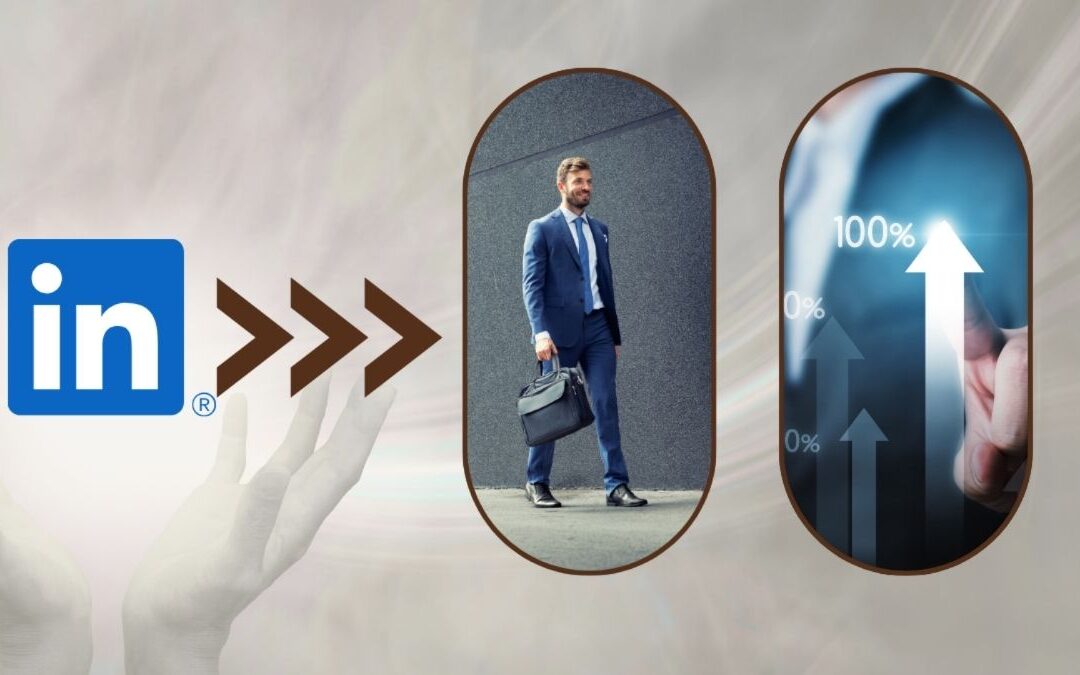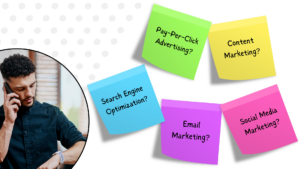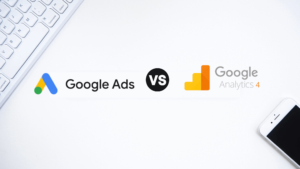For many small business owners, LinkedIn can feel like one more thing on your already-full plate.
You’ve heard it’s great for networking, visibility, and leads, but between understanding the algorithm, deciding what to post, and the time it takes to show up consistently… it’s hard to know where to start, or whether it’s even worth it.
Here’s the thing: LinkedIn isn’t just “worth it.” It’s one of the best tools in your marketing toolbox.
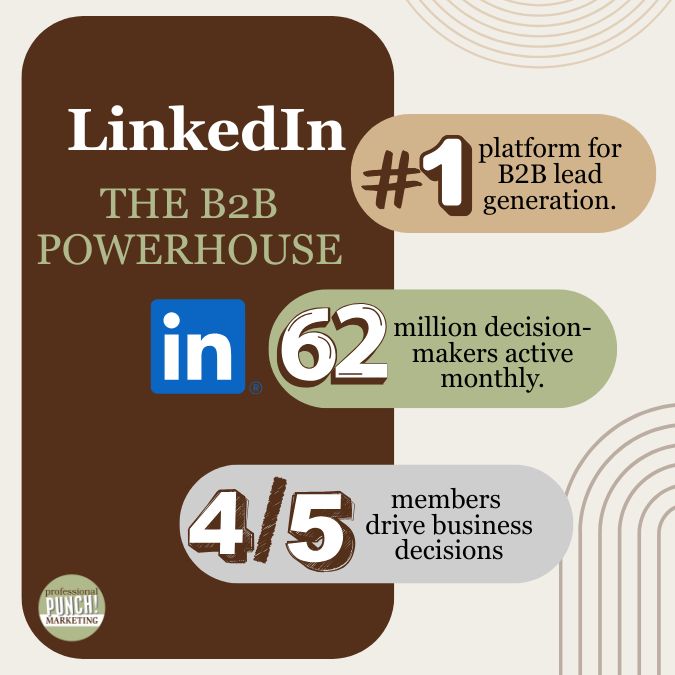
Why? Because it’s built for business.
- 4 out of 5 LinkedIn members drive business decisions at their companies
- 62 million decision-makers are active monthly
- It’s the top platform for B2B lead generation, outperforming all other social channels combined
But knowing LinkedIn matters, and knowing how to actually use it effectively are two different things. That’s where this guide comes in. We’ll show you how to leverage LinkedIn strategically: building the right connections, creating content that resonates, and turning your presence into a growth engine, all without the guesswork or pushy tactics.
Here’s what you’ll learn:
- Build a high-impact network with intention
- Share thought leadership content that builds trust
- Harness the power of LinkedIn newsletters for long-term growth
- Use events and webinars to showcase your expertise
- Run targeted ads that drive results
- Optimize your content for SEO to increase visibility
- Track performance and refine your strategy with LinkedIn analytics
- Unlock the full potential of LinkedIn for your business
Networking with Intention
Your reach, relevance, and influence on LinkedIn start with the quality of your network, not just the size of it.
It’s not about collecting connections like baseball cards. It’s about building an intentional audience of people in your industry, potential clients, referral partners, and thought leaders who can amplify your voice (and maybe even open doors you didn’t know existed).
Here’s how to grow a quality LinkedIn network:
✅ Personalize your connection requests
A generic “I’d like to add you to my network” is easy to ignore. A short, specific message makes it personal and memorable.
Example Script:
Hi [First Name], I enjoyed your recent post about [topic]. I work with [type of clients] on [specific challenge], and I’d love to connect and keep learning from your insights.
This takes 20 extra seconds, but it can triple your acceptance rate.
✅ Comment strategically to grow your visibility
Want more people to notice you without posting constantly? Commenting is an underutilized strategy.
-
- Add thoughtful comments to posts from people in your target audience.
- Go beyond “Great post!” and share a quick insight, question, or related example.
- Consistency matters more than volume. Even 2–3 quality comments a day can put you in front of hundreds of new eyes.
✅ Leverage shared connections
Warm introductions through mutual contacts, previous employers, or alumni groups are far more effective than cold outreach. Don’t be afraid to ask; most people are glad to make a simple introduction.
✅ Join and participate in groups
Active groups are an underrated way to increase your visibility with highly relevant audiences. If you’re contributing helpful posts or perspectives, people notice, and they often check out your profile.
✅ Nurture the relationships you already have
Connections aren’t valuable unless you engage with them. React to their posts, leave comments, share content, and occasionally send a DM just to check in. It keeps the relationship alive and keeps you top of mind.
Common Networking Mistakes to Avoid
- Mass-adding strangers without context or a strategy (LinkedIn may even restrict your account for this).
- Over-pitching in the first message. Nothing ends a new connection faster than an instant sales pitch.
- Being a ghost.. If you never comment, post, or engage, your network won’t grow in value.
Thought Leadership Through Content Sharing
Thought leadership isn’t about having all the answers. It’s about showing up with ideas, experiences, and insights that help your audience think differently or solve real problems.
And the numbers don’t lie. According to a study by Edelman:
- 80% of decision makers say thought leadership increases their trust in a vendor.
- 48% have awarded business because of it.

So, how do you consistently create content that builds trust and stays true to you and your brand?
Start with Content Pillars
Instead of trying to post about everything, choose 3–4 content pillars that reflect both your expertise and what your audience cares about.
Here’s a simple content matrix you can use:
- Personal → Share a challenge you’ve faced, a behind-the-scenes moment, or a leadership lesson learned.
- Educational → Tips, how-tos, or frameworks that help your audience solve real problems relevant to your expertise and service offerings.
- Social Proof → Client wins, case studies (with permission), or user-generated content that shows results.
- POV (Point of View) → Weigh in on industry trends, bust a myth, or share your take on a common challenge.
Rotate through these, and you’ll build consistency without running out of ideas.
Practical Best Practices
- Use tags and mentions to broaden reach and invite engagement.
- Mix up your formats: text posts, images, videos, carousel docs, or even long-form articles.
- Respond to every comment on your posts (it increases your visibility).
- Create a repeatable series: weekly tips, Q&As, client spotlights, or “behind-the-scenes” posts give people a reason to come back.
ProPunch POV
Content that’s too polished often gets ignored. Authentic beats perfect every time.
People don’t connect with flawless graphics and corporate jargon. They connect with real stories, real voices, and the human side of your business.
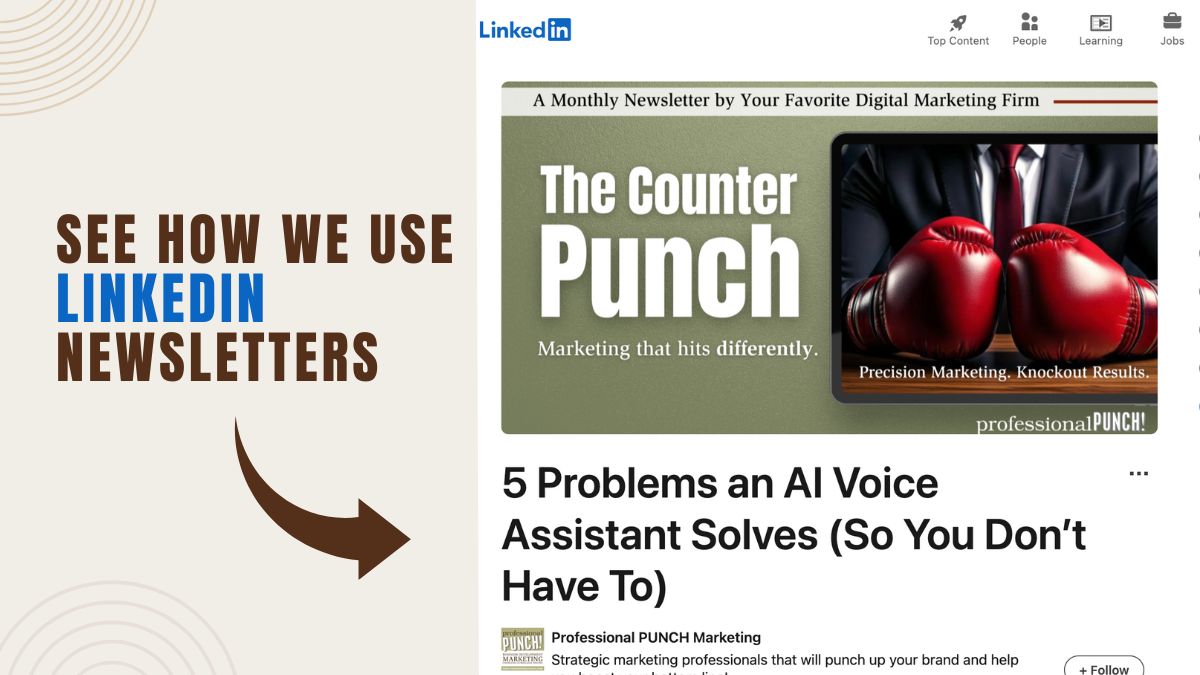
How Often to Publish
Consistency is more important than frequency. A monthly cadence works well for most small business owners.
Start where you’re comfortable and stick with it. You can always scale up later.
Cross-Promotion Strategy
Don’t let your newsletter live in isolation. Promote it by:
- Sharing new editions in your LinkedIn feed
- Adding a link to your email signature and website
- Encouraging subscribers to forward it to colleagues or peers
- Have employees share with their own networks to broaden its reach
Events & Webinars Bring Your Expertise to Life
Hosting events is one of the most powerful ways to demonstrate expertise and build community on LinkedIn. They humanize your brand, showcase your knowledge, and create high-value experiences that deepen relationships with your audience.
Event Types and Ideas
You don’t need a massive budget or a big production team to make events work for you. Start with formats that match your audience’s needs and your capacity:
- Workshops & Masterclasses → Teach a practical skill your audience can apply immediately.
- Networking Events → Host virtual roundtables or Q&As where peers can connect and swap ideas.
- Product or Service Launches → Announce something new with a live demo or client showcase.
- Educational Webinars → Break down trends, tools, or strategies with slides, guest speakers, or panels.
- LinkedIn Live Events → Stream directly to your network with interactive Q&A — the replay stays on your page for ongoing visibility.
Why People Attend Events
Here’s the truth: people don’t attend events to be sold to.
They attend to:
- Expand their knowledge and skills
- Find solutions to their problems
- Connect with peers
That means your job is to position yourself as an expert and trusted guide — not a salesperson.
By showing up with generosity and insight, you’ll build credibility, attract the right people, and spark conversations that often lead to business naturally.
Advertising with Precision
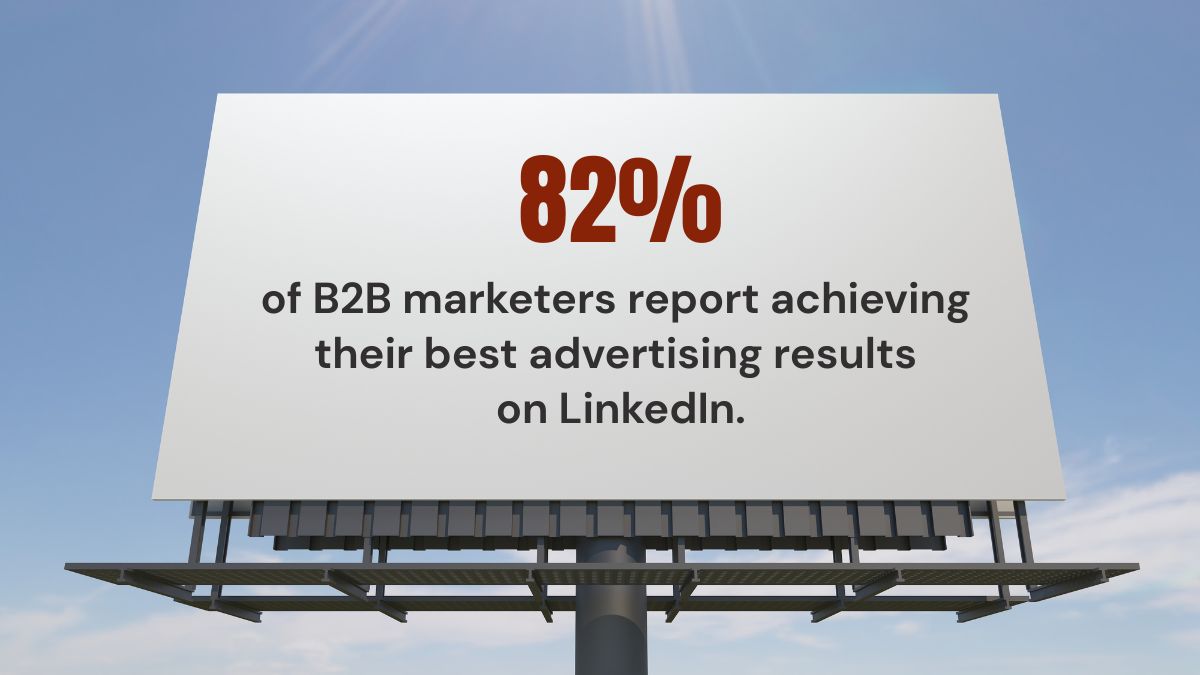
Let’s be honest: LinkedIn ads aren’t cheap. But here’s why they’re worth considering — 82% of B2B marketers report achieving their best advertising results on LinkedIn.
What makes LinkedIn ads so successful?
- Unmatched targeting: Job title, industry, company size, seniority, function, location, education, even skills or interests.
- Variety of ad formats: Single image, carousel, video, document, event promotions, job listings, or even sponsored messages delivered directly to your target audience’s inbox.
- Lead Gen Forms: Profile data auto-fills forms with one click, making it easy for people to engage without friction.
Takeaways from LinkedIn’s Own Playbook
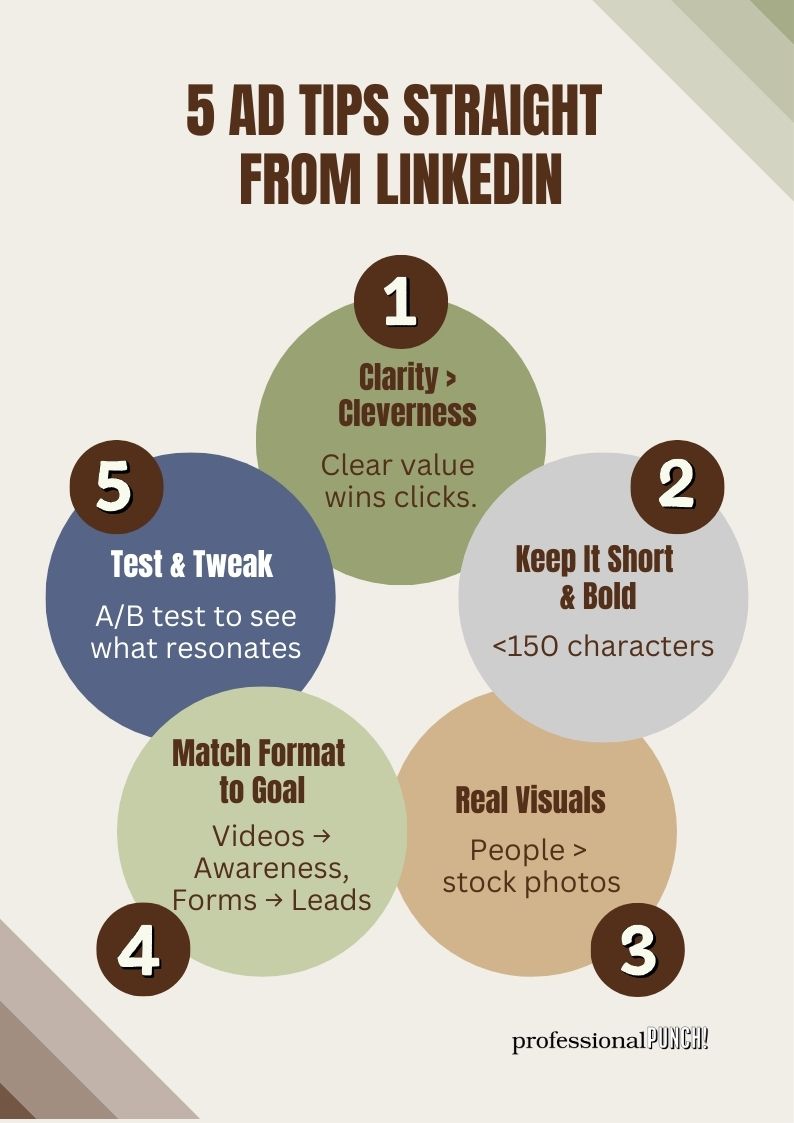
LinkedIn created a resource called Read Me If You Want to Advertise Better on LinkedIn — a straightforward guide broken down into five steps and packed with best practices.
Here are a few highlights worth knowing:
- Clarity beats cleverness. Ads that clearly communicate value drive higher engagement.
- Short, bold copy works best. Think punchy headlines under 150 characters.
- Visuals matter. Use real people, not stock images, and make sure your creative matches your brand.
- Match your ad format to your goal. Want awareness? Use video or carousel. Want leads? Try Lead Gen Forms.
- Test and tweak. Run multiple versions of your ad (A/B testing) to see what resonates most.
SEO-Driven Visibility
One of LinkedIn’s best-kept secrets? The content you publish there isn’t limited to the LinkedIn feed. It’s indexed by Google, which means your newsletters, documents, and even graphics can show up in search results long after you hit “post.”
That gives your content a much longer shelf life and a better ROI.
How to Optimize Your LinkedIn Content for Search
- Use keywords in smart places: Work relevant terms into your post copy, article headlines, headers, and newsletter names.
- Don’t skip alt-text: Every image or document you upload should include alt-text. Not only does this help with accessibility, but it also gives search engines more context.
- Name your files with intention: Uploading a PDF? Call it “LinkedIn-Checklist-Consultants.pdf” instead of “document123.pdf.”
- Think strategically with newsletters: > Each edition should have an SEO-friendly title (like “How to Grow on LinkedIn Without Premium”) and a clear meta description.
- Use the Featured section like a mini website: Pin your cornerstone content like guides, checklists, and case studies so visitors can instantly find and engage with your best work.
If content is king, visibility is the crown. Write for people first, but give Google the breadcrumbs it needs to put your work in front of them.
Track and Learn with LinkedIn Analytics
With LinkedIn analytics, you can track:
- Content performance: Track impressions, engagement, and reach.
- Visitor demographics: Understand who’s viewing your page and how they found it.
- Follower growth: See where your new audience is coming from and who they are.
- Competitor comparison: Benchmark your presence against others in your space.
- Employee advocacy: See how your team’s engagement is amplifying your reach
Don’t just rely on LinkedIn’s dashboards at the moment. Create a simple spreadsheet where you:
- Log key performance indicators (KPIs) monthly
- Track post topics, formats, and performance side by side
- Note any changes you made (posting time, hashtags, visuals, tone, etc.)
Over time, patterns emerge, and that’s where the magic happens.
What to Do When a Post Flops
Not every post will be a hit. Instead of getting discouraged, ask:
- Was the topic too broad or irrelevant for my audience?
- Did I bury the hook in a long intro?
- Did I post at a time my audience wasn’t active?
A flop is feedback. Use it
When a Post Spikes
Don’t just celebrate — analyze it.
- What format did you use?
- Was the topic tied to one of your core content pillars?
- Did you tag others, use a visual, or tell a personal story?
Then replicate the winning ingredients in your next post.
Final Takeaway: Unlocking LinkedIn’s Full Potential
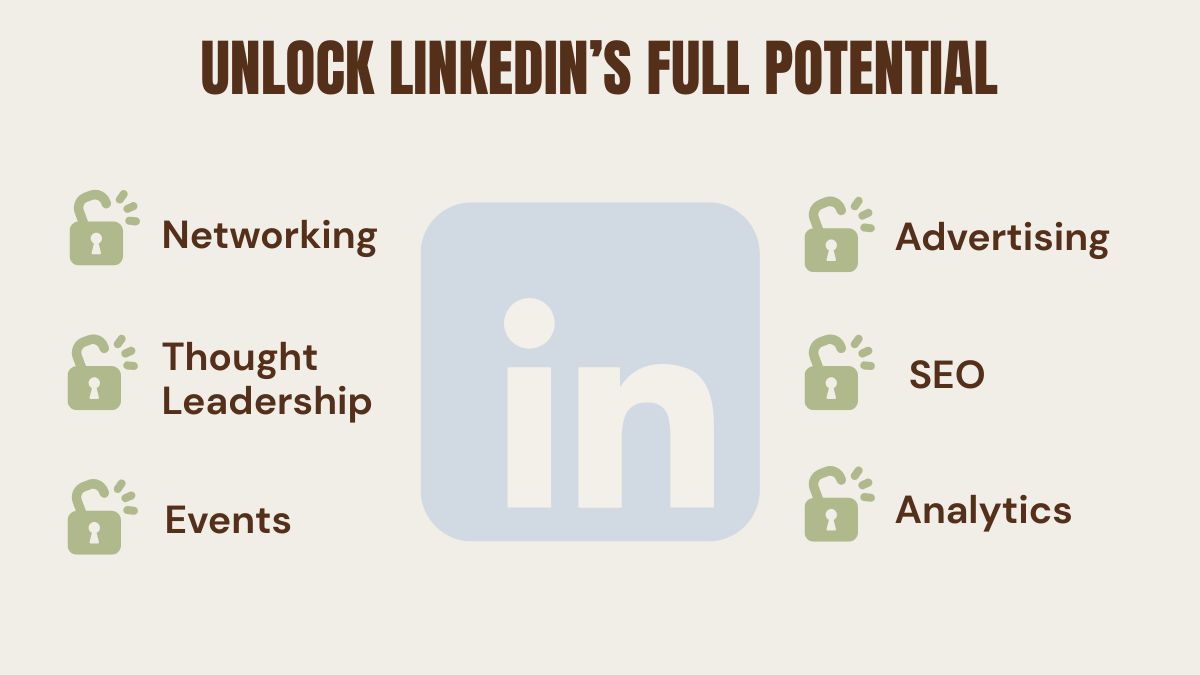
If you’re only using LinkedIn to maintain a profile or post once in a while, you’re just scratching the surface.
LinkedIn has all the tools to help you grow an intentional network, generate quality leads, create consistent visibility, and establish yourself as a trusted voice in your industry.
But like any tool, it works best with a plan. That’s where we come in.
The Professional Punch LinkedIn Mentoring Program
We’ve created a unique 12-week LinkedIn mentoring program designed for growth-minded small to medium-sized businesses, second-stage startups & entrepreneurs, and executive B2B fractional consultants who are ready to stop dabbling and start seeing results.
Here’s what it looks like:
- Weekly check-ins to keep you on track
- Stats review so you know what’s working and what needs adjusting
- Connection sprints to grow your network with the right people
- Profile tweaks and engagement check-ins to make sure you’re showing up strong
- Milestones and assignments each week to build skills step by step
By the end of the program, you’ll not only have a stronger LinkedIn presence that drives growth for your business — you’ll also know the strategies and tips to keep building momentum on your own.

Ready to turn LinkedIn into a true growth engine for your business?
Book a consultation to learn more about our LinkedIn Mentoring Program and how we can get you started.

